Strategic Direction







In 1847, The Pulteney Street Schools were founded to provide a ‘plain and useful education’. This commitment to purpose and pragmatism has been part of our School ever since. In the 21st century, these egalitarian ideals inspire us to welcome new generations of Pulteney Grammarians.
The strategic plan ‘ Prosper’ establishes a framework that will afford Pulteney Grammar School an agility whilst it holds fast to that which is good. This agility was seen no better than through the COVID-19 pandemic when Pulteney so readily was able to pivot to a remote learning program to ensure the continuity of learning for students amongst the uncertainty of the
our students and families that is part of the fabric of the School.
This strategic direction differs from many contemporary plans in that it returns to our history in order to move forward. Coinciding with our 175th anniversary, Prosper has sought to draw together the threads of history to celebrate the origin story of Pulteney as a source of purpose and an alignment of culture. From this story, the School’s lived values –its DNA – crystalises as the values of the School: Authenticity, Relationships, Purposeful, Enduring, Boundless, Personalised. In these from a Pulteney education; a character to engage with the complexity of modern life.

It is my privilege to introduce the 2022-2026 phase of the Pulteney strategic plan. In this phase, we have sought to draw together contemporary visions for education and
six broad areas of strategic focus with their own narratives for the future:
• Empowered, motivated and resilient students
• An outstanding teaching and learning experience
• Skilled, passionate and committed staff
• An innovative and integrated learning environment
• Collaborative and creative partnerships
• A high performing organisation
These narratives coalesce as ‘The Pulteney Experience’: what it is to be a student, a parent or an employee of Pulteney Grammar School. The foundations and strength of Pulteney are in its community; Prosper seeks to capture the essence of this experience in an ever changing world.
in its facilities and its teaching and learning programs to ensure that it continues to provide a ‘useful education’ for each and every student. The School’s masterplan has been completed to complement and enable the strategic vision. In and of itself, it is a milestone in the history of Pulteney
masterplan ever completed with the School in complete ownership of the School site. This evolution of the campus through history provides the School with so much of its
the city in which it resides, a mix of Victorian heritage, urban renewal and contemporary infrastructure. The new masterplan provides the opportunity to consider how the site works together for all students.
The Strategic Direction is the outcome of many hundreds of hours of work by the School Executive and staff led by Principal Cameron Bacholer and by the Board of Governors.
I am grateful to all who have committed their time so that Pulteney may grow.
I am excited by what the future holds for one of Adelaide’s great educational institutions.
O prosper thou our handiwork.
Mr Allen Candy Chair of the Board of Governors
Pulteney was established by the enterprise of those who sought opportunity and valued education. Pre-dating the introduction of government sponsored education, the School’s entrepreneurial spirit remains as strong today as it has been throughout its history. The Scho ol’s journey has mirrored that of our own: learning and gathering wisdom as part of life’s journey.
It is in these humble origins that the cultural strength of Pulteney Grammar School has been forged and through which, its motto: o prosper thou our handiwork , resonates.
For 175 years, Pulteney has been a school for everyone and as it approaches its bicentenary, this egalitarian ideal remains as central to the School’s vision as it was in 1847 or at any moment in its history.
In 2020 the Organisation for Economic Collaboration and Development (OECD) published Back to the Future of Education: Four OECD Scenarios for Schooling. In the report, the OECD sought to consider the future of education through multiple scenarios concluding that there were four scenarios for the future of schooling:
• Schools Extended
• Education outsourced
• Schools as Learning Hubs
• Learn-as-you-go
Of the four possible scenarios, it is ‘schools as learning hubs’ that resonates with the history, the culture and the values of Pulteney. For Pulteney is,
the time and place arrangements developed in the 1800s which still govern learning to this day; the notion of learning
importance of nurturing agency in students and teachers, alike.
These represent the direction for education: they are neither simple nor insurmountable challenges. The Pulteney strategic direction, Prosper, seeks to set the course towards these possibilities whilst allowing for the natural and inevitable ebb
to a direction whilst maintaining the ability to alter to steer as opportunity and need demands. In its design, the strategic plan establishes multiple horizons to inform current and future strategic thinking:
we are
Each of these horizons offers a different point of focus; the chance to align the long term direction of education with the unique aspects of our School culture and with what is happening in the School, today. As an approach to strategic thinking it acknowledges that our future draws strength from our past and that everything comes together in our present.
At the centre of this strategic direction is education: teaching and learning. Every initiative, every idea, every endeavour is guided by a clear direction that seeks to establish a vision for what school will feel like for students, parents and teachers: The Pulteney Experience.
egalitarianism, by its commitment to a meritocracy and by its preparedness to embrace the challenges of the future rather than take refuge in the past.
As a learning hub, Pulteney is ideally situated in the central business district; a participating member of the greater city and a community that both draws from and contributes to the city of Adelaide. It is
we
These are the timeless aspects of Pulteney. Our origin, our values, our mission and vision.
opportunity on education and its design.
The opportunities that the School will pursue in the next term of the strategic plan.
Now What will happen today.
I take this opportunity to thank you for your commitment to Pulteney Grammar School; without our school community we have no purpose, no reason to exist. I would also like to offer my sincere thanks to Chair of the Board, Mr Allen Candy – together with the Board of Governors – for their support, their vision and their wisdom.
Cameron Bacholer Principal
Ngadlu Kaurna miyurna tampinthi, Parnaku tapa purruna kuma, Ngadlu purrutyi kumangka padnititya.
Independent education in Australia has its origins with colonial settlement and
to universal education in 1875. While most independent schools originated from endowment from a church body or the philanthropic ideals of a wealthy benefactor, the story of Pulteney Grammar School is quite different.
The School was founded in 1847 to ‘offer the elements of a plain, useful education to all such that are placed in circumstances that render economy indispensable’. The school was founded for the mercantile and working classes.
name. Where many schools have sought to take names in deference to the feats of saints or in ode to the stature of monarchs, the Pulteney Street School drew its name from its location and was named in honour of the work and toil of a person: Sir Admiral Pulteney Malcolm.
The South Australian in December
inaugural Speech Day: ‘at 10 o’clock, the procession left the school led by banners

had the words “Pulteney Street Schools” and was followed by 180 boys walking in pairs. The second white banner was followed by 80 girls.’ The school was co-educational from its commencement and in fact it was reported that in 1851, twelve full scholarships – six to boys and six to girls – where granted to ‘children whose parents could not afford the fees’; egalitarian and philanthropic from the outset.
Pulteney has moved site on two occasions since its foundation, laying its current roots on South Terrace in 1921. Since then the School has grown by acquisition and amalgamation of adjacent properties rather than endowment and expansion. The School is a microcosm of
the city in which it resides, a combination of colonial Victorian era grandeur, the scholastic gothic, a converted warehouse, an old pub, a mechanic’s institute, a long forged partnership with the city of Adelaide and the city’s beloved parklands, and contemporary purpose-designed educational
sustainability as well as urban renewal.
The School’s birth was humble but purposeful. Pulteney’s origins lie not in the desire to perpetuate privilege but to build and contribute to the growth of society; it is a story of inclusion rather than exclusion. It is an origin of altruism and opportunity; of pragmatic and egalitarian ideals. It is an origin that past Headmaster Rev Alexander Kerr captured in 1898 when he granted the School its emblem and motto: O prosper thou our handiwork.

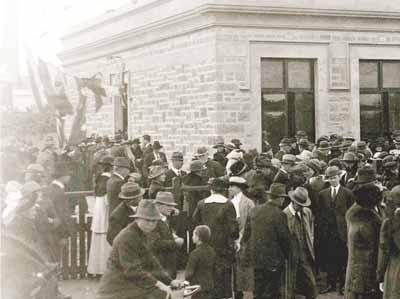




A Pulteney Experience provides a personalised education where:

• The Pulteney DNA underpins the student experience and as lived values offers direction to prosper and is guided by the School’s strategic direction
• An integrated student experience of explicit instruction, implicit learning and active participation nurtures the development of the Prosper framework and provides a coherent student experience
• The measure of achievement is broader than the narrow frame of reference provided by academic results: personal, social, creative and critical skills are recognised through ‘micro-credentialing’ throughout Reception to Y12.

Pulteney students prosper when:










• Learning is socially constructed and connected: locally, globally and digitally
• Learning is inclusive and personalisable and is designed in recognition of a student’s strengths, interests and passions to inform learner pathways
• Learning is evidence-informed and data-driven and is enabled by continuous quality feedback and assessment practices that identify mastery, readiness and growth
• Learning experiences foreground the transfer of knowledge, skills and conceptual understanding for deep learning and growth
• Quality thinking and learner agency are taught, applied, recognised and grown.

An integrated educational eco-system augments each aspect of school life towards a cohesive, articulated student experience. The operations of the School are aligned towards the creation of an integrated, authentic, technologically rich environment that begins to move beyond the spatiochronological boundaries that restrict educational experiences and effectiveness. This boundless spirit sees Pulteney students physically and virtually venture beyond its gates as active members of the city of Adelaide and the world. These innovations are coupled with a range of innovative pedagogies aligned with common intent towards the fostering of curated, distinctive experiences for students and staff that culminate with a holistic Pulteney experience.
In 2020 the Organisation for Economic Collaboration and Development (OECD) published Back to the Future of Education: Four OECD Scenarios for Schooling. The publication provides an overview of the potential directions for schooling for exploring the competing tensions that have emerged in education.
Fig 1. offers an exploration of the future of schooling through exploring the intersection of the continuity and disruption continuum with how it applies to schools and education as related but ultimately separate.
These scenarios lend themselves to assessing risks and leveraging opportunities and consider the tensions and paradoxes and the change processes involved to adopt a preferred Pulteney response to an education worth having.
Schooling (Continuity)
Schools (Continuity) Schooling (Disruption)
Fig 1. Continuity and disruption continuum
School (Disruption)
The outcome of this analysis is to establish four possible directions for schools and schooling:
Of these four scenarios, scenarios one and three provide a basis for adaptation by independent schools to meet the future needs of society; scenarios two and four, by contrast, establish a context whereby the notion of a physical school is obsolete.
Scenario Three, whereby schools evolve as learning hubs, provides an opportunity for a city-based school such as Pulteney to establish a contemporary value proposition consistent with its heritage and cognisant of the future.
Robert Kay’s ‘Education 3.0’ framework aligns with the Scenario 3 vision for
the future of schools as provided by the OECD and in description of the
the role of the school as a learning hub. Indeed, Kay’s research depicts a model of education complimentary to the DNA and story of Pulteney and
of the School as described through the 10 year vision for education in the reworked six principles.
The rapid advances in technology in recent decades have already brought about substantial changes in education, opening up new opportunities to teach and learn anywhere anytime and providing new tools and methods to improve learning outcomes and support innovative teaching and learning.
intelligence era. This will include a shift from a purely knowledge-based education toward a focus on skills (creativity, critical thinking, communication, and collaboration), character (mindfulness, curiosity, courage, resilience, ethics, leadership), and metalearning (learning how to learn, growth mindset, metacognition). As such integrated and innovative learning environments with be designed according to these principles in order to deliver a more versatile and relevant education.
Learning ecosystems , described by Hannon et al., offer another context as an innovative and integrated learning environment, comprising diverse combinations of providers, including schools, businesses, community organisations and government agencies who work together to create new learning opportunities and pathways to success. Such ecosystems are supported by an innovative credentialing system or technology platform that replace or augment the traditional linear system of examinations and graduation. They
geographic location in terms of resources overall. They may exploit the technologies now available to choreograph global learning resources.

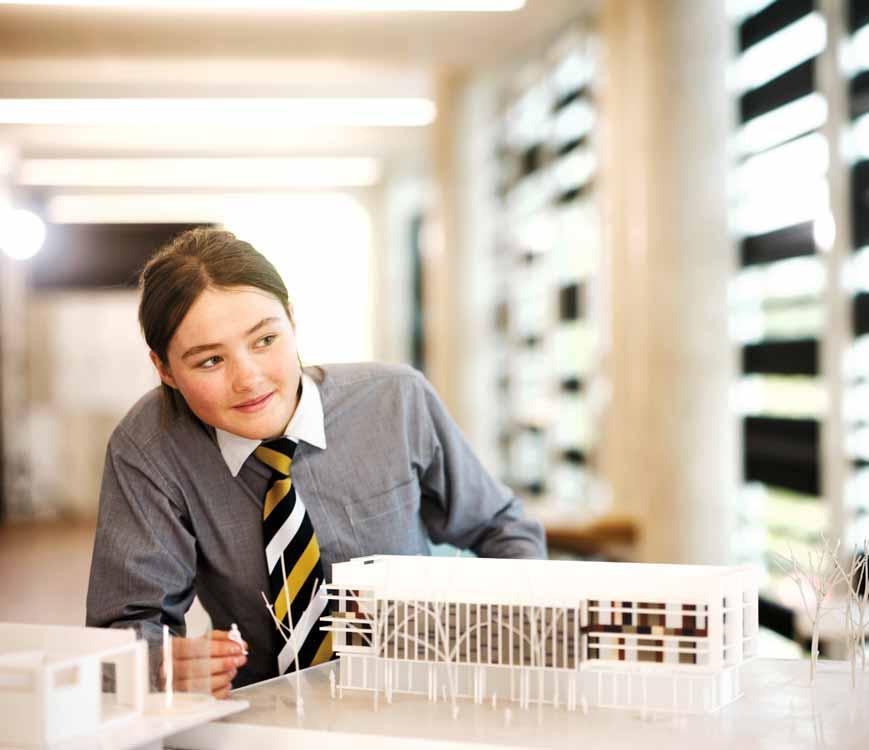
APulteney student will be authentic in action and considered in opinion. Their educational journey will be one where
pursue this through their learning experiences. A Pulteney student will be empowered to question their world respectfully and inquisitively through the provision of regular and deliberate feedback. Through creative collaboration with all members of their community, Pulteney students will draw on a mutual respect that will nurture relationships which allow all to prosper. In their thoughts, words and deeds they will respect the legacy of their actions and seek to make decisions that are enduring in their implications for humanity. They will support, sustain, and care for their world, their school, each other and themselves.
Research into the concept of learner agency focus’ on what supports learner empowerment for learners self-actualised prosperity. These elements include motivation, engagement, and non-cognitive development. In recent years research has shifted beyond engagement models of learning towards models of empowerment that situate students as drivers of their own learning.
The OECD Learning Compass 2030 , (2019) implies that student agency includes a sense of responsibility to participate in society circumstances. Agency requires the ability to frame a guiding purpose and identify actions to achieve goals. Agency is about acting rather than being acted upon; shaping rather than being shaped; and making responsible decisions and choices rather than accepting those determined by others. Student agency is not a personality trait but is malleable and learnable.
In ‘Student agency: Learning to make a difference (2017) Charles Leadbeater explores purposeful, responsible agents of change.
the essential components of agency as being aspects of agency: creative, economic, moral and social; and levels of agency: individual,
collaborative and collective. Building upon his earlier thinking, Learning on Purpose: 10 Lessons in Placing Student Agency at the Heart of Schools (2022) curates the development of practical approaches to achieving greater agency among students; and explores the role of teachers, learner environment as well as the organisation and leadership of the whole school.
Mindsets and Student Agency provides a summary of research into the hierarchy of learner needs and the core elements of student agency. Briceño outlines the four mindsets required for effective student agency as set out by Farrington and colleagues 4:
• Mindset 1: A Growth Mindset: “I can change my intelligence and abilities through effort.”
• Mindset 2:
• Mindset 3: Sense of Belonging: “I belong in this learning community.”
• Mindset 4: Relevance
ASPECTS:
Moral agency: doing the right thing
Creative agency: bringing the new into being
Economic agency: creating value with and for others
Political agency: capable committed citizens
KNOWLEDGE
Disciplinary and Interdisciplinary
Genetic cognitive skills: maths, history, science, art
Deeper knowledge of systems, strings, concepts, theories
Partnerships for 21st Century Learning provides analysis of student agency and the skills required for students to be successful agents of their learning and thinking. The
building high impact teaching through student agency.
The value and urgency of engaging young people in their learning and with conversations about their learning is the focus of Educational leadership in ensuring student voice plays a prominent role in sustainable changes to the learning culture working in collaboration with students.
Finds expression
LEVELS:
Individual: personal growth
Collaborative: cooperative achievements Collective: being part of something bigger
PERSONAL STRENGTHS
Persistence, Growth, Empathy, Collaboration, Self-regulation,
Fig 5. Student Agency: aspects, levels and enablers
SOCIAL SKILLS
Attitudes Values Skills Competencies
Learning is a personal and social experience requiring self-awareness, metacognition and collaboration.
A purposeful Pulteney education will personalise learning for the strengths, needs and passions of each student. Teaching practice will be purposefully informed by research affording every student a useful education. Teachers are mentors for students on their path to adulthood as part of relationships fostered through mutual respect who collaborate to create curated and distinctive learning experiences informed by a deep understanding of each student. A sophisticated gathering and use of data enables teachers to be adaptive in their teaching and to build on each student’s prior learning. The School’s curriculum, teaching and learning frameworks will enable teachers to differentiate and will support students to follow their passions and learn at their level of readiness.
A useful education at Pulteney where all prosper represents an outstanding learning experience that is thoughtfully designed and curated to prioritise big ideas and concepts, seen as essential to fostering and building deep and enduring understandings and to facilitate the transfer of learning from one context to another.
Contemporary learning design draws from the research of Erickson, Bialik and Fadel (2018), Wiggins and McTigue and Perkins and Blythe, who view learning design as a coherence mechanism enabled by harnessing the inter-relationship of teaching, curriculum and pedagogy.
Personalised approaches to teaching and learning foreground both the mastery of disciplinary and interdisciplinary knowledge, skills and understanding, as
well as the transversal competencies, skills and dispositions, which are both central to the Organisation for Economic Co-operation and Development’s (OECD) seminal 2030 Framework. Globally recognised educational thought leaders: Bialik and Fadel, Lucas and Smith and Claxton all propose a non-binary approach that sees the explicit and implicit teaching of disciplinary and transversal competencies, skills and dispositions.
Meaningful learning experiences, as described in Good Teaching Differentiated Classroom Practice Learning for All, attend to learner diversity and are supported by multiple entry points, personalised pathways and inclusive practice. In a differentiated learning environment where all students can prosper (across the full range of ability), teachers partner with students, parents and experts to continually plan, monitor and evaluate learner success in light of teaching and learning. Whole-school approaches to creating transformative learning environments, that reduce within school variability and enable high impact teaching, are described by Anderson and Jefferson, Ritchhart and Zhao.
research into effective teaching and learning, Teachers Make a Difference, What is the distinguishable attributes of excellent teachers.
Expert teachers:
• identify essential representations of their subject;
• guide learning through classroom interactions;
• monitor learning and provide feedback;
• attend to affective attributes; and can
Recent reports into evidence-based principles of what constitutes high impact teaching draw common conclusions, with both ‘What works best’ (NSW Department) and High Impact Teaching Strategies (Victoria Department)
feedback; the use of data to inform teaching; differentiation; collaborative learning; assessment for learning and metacognitive strategies are critical to teaching effectiveness.
Furthermore, Australia’s Grattan Institute highlights the importance of a focus on teachers professional growth centred on “learning as the work”, in several
for great teaching, Targeted teaching: How better use of data can improve student learning and Better teacher appraisal and feedback: improving performance. They argue that effective teachers develop through a commitment
monitoring and evaluating practice; and effective professional learning, both collegially and individually. Likewise, the Hay Group’s Creating a high performing
of teacher professional growth, a staff culture of shared responsibility and school leadership that is shared, stable, strategic and sustained over time.
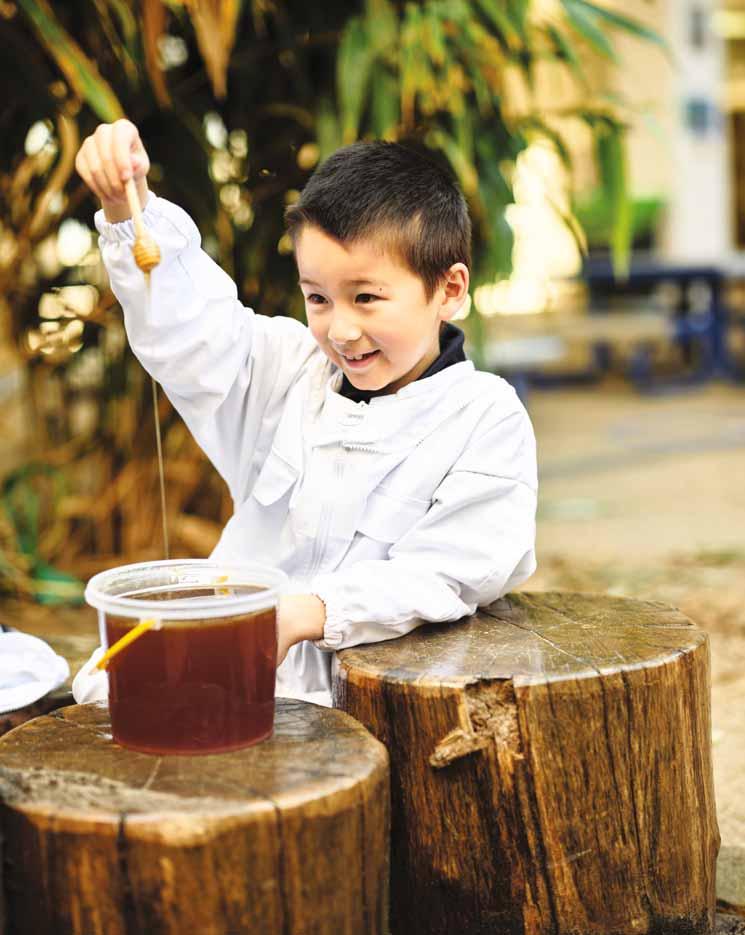

ulteney staff are courageous. Passionate in thought and deed their boundless thinking
culture that prospers through collaboration to ensure that every student is engaged, challenged and learning successfully. This environment of professional practice and professional growth provides purpose to each and every day. There are shared convictions that highly effective evidence-based teaching practices are key to improving student growth. Staff are aware that they are part of something greater than the individual and that their legacy is entwined with that of the School. Supported by a professional practice framework that nurtures ambition and promotes wellbeing, their practice is integral to each and every student’s educational experience.
on student progression in learning is having highly expert, inspired and passionate teachers and school leaders working together to maximise the effect of their teaching on all students in their care. Harnessing collaborative
and overcomes within-school variability of teacher excellence, and learner experience, to create an environment where ‘all teachers have the same impact
according to Donohoo, is present when teachers believe in their own capabilities and, as a team, share the belief that together they can make a positive difference for all students. Donohoo’s research illustrates the strengthening
enabling conditions, structures, practices and professional learning.
The Australian Institute for Teaching and School Leadership (AITSL) place a strong emphasis on the importance of building a high-performance. Skilled and committed staff continuously seek feedback and plan, monitor and evaluate their own

their pedagogical approaches to evaluate their own impact.
Gabrielle Matters, in ‘Using data to support learning’, envisions an educational system built around ‘evidenced-based practice’: the idea that decisions at all levels are data driven and evidence based. Timperley’s data cycle model suggests an embedded approach for data informed classroom practice.
Human-scale at Scale explores how to scale student-centred learning models, not just in the context of the structural mechanisms and procedures involved but also in terms of seeding, spreading and cultivating new teaching and learning cultures at some of the world’s most forward-thinking schools.
To prosper, Pulteney actively seeks partnerships that draw on the strength of community and connections so that the school can provide the most useful education possible. An enduring member of the city of Adelaide since 1847, Pulteney walks the path to reconciliation and is a global, boundless school that participates actively and purposefully in its community; forming authentic, mutually-empowering partnerships towards shared, sustainable and environmentally responsible outcomes.
The School draws on its Anglican tradition to value service learning as a fundamental aspect of a student’s educational experience. Of paramount importance is the School’s relationship with its families and Old Scholars. The Pulteney community is the legacy of a shared, purposeful history.
Barker and Harris (2020)1 provide an important distinction between involving parents in schooling and engaging parents in learning. This opportunity for authentic engagement with parents in the education of their child is a key strength of Independent Schools.
“Parental engagement in learning underpins children and young people’s cognitive and social and emotional development, shapes family practices and behaviours, and can impact the nature of the school community and the experience of schooling. Parental
leverage point for enhancing the academic attainment and wellbeing of children and young people” (Emerson, Fear, Fox & Sanders, 2012)2 . When the focus is on learning outcomes, parent engagement has the greatest impact on student achievement
the immediate school year.
Parent engagement, across all ages of schooling, includes:
• Acknowledgment that ‘involvement’ is most often activity-based and might not genuinely ‘engage’ parents or the community
• All dimensions of children’s learning at home, at school and in the community
• Facilitating relationship building between parent, teachers and community
• Knowledge and understanding of the school’s expectations
• Valuing inclusivity, interest and the ability to participate and engage
• Genuine engagement in decision-making processes.
Rather than ‘involvement’ and ‘engagement’ being used interchangeably, the diagram below (See Figure 7) illustrates degrees of parental agency (adapted from Goodall, 2017)3
Successful community engagement in schools involves a long-term cultural shift towards
with the wider community, and external agencies. Over the years, schools have evolved as places of partnership and facilities are more frequently leveraged for both public use and enabled for a range of education-related activities that foster community building (Coultson, 2020) 4
A recent framework that embraces this vision proposes that family-school engagement be an ongoing practice or way of doing things rather than a standalone program. It envisions family-school engagement as something everyone in the school does every day rather than as the responsibility of one person or team inside the school. This framework, called the Dual Capacity-Building Framework for Family-School Partnerships (Figure 8), spells out the essential conditions for effective family-school engagement and argues that families and schools have equally important, mutually supporting roles (Mapp & Bergman, 2021). The framework centers on respectful relationships between families
mindsets far too often get in the way – as a result, seeing each other’s weaknesses rather than strengths. The goal is to build the capacity of education personnel and families in four areas: capabilities (skills and knowledge), connections (networks), cognition (shifts in beliefs and values),
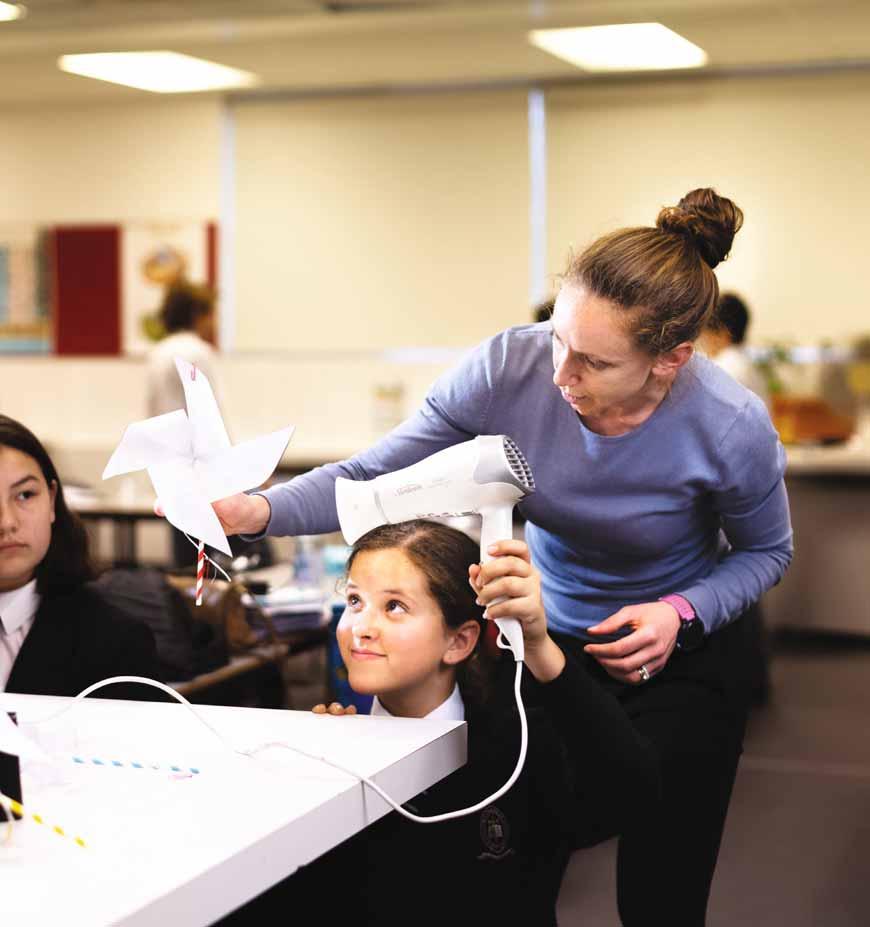
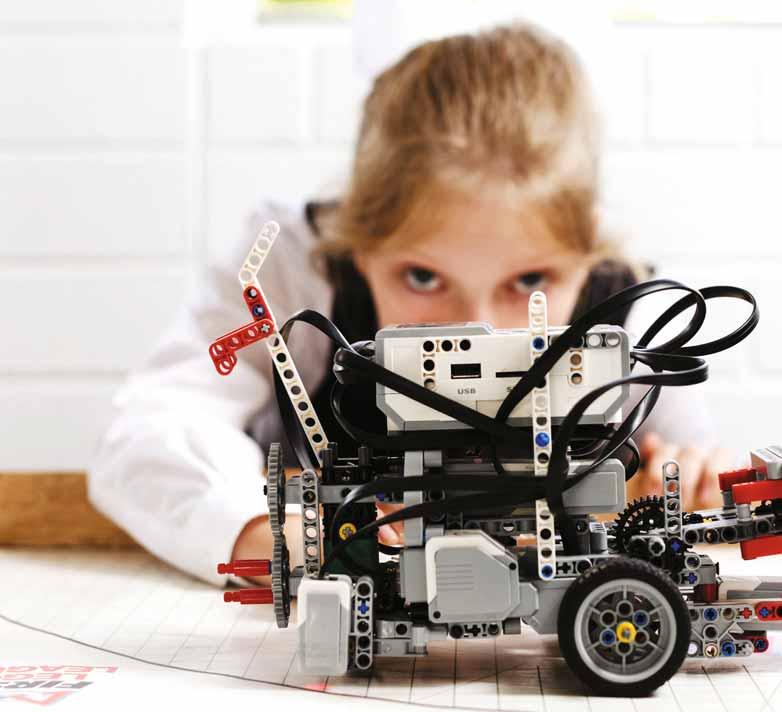
The pursuit of a personalised educational experience requires careful and prudent strategic thinking and planning executed with a boundless

by the Board of Governors and Executive are paramount. The culture of this School is one founded on authentic relationships that value honesty and truth as much as respect and empathy. It is a culture that values self-
its inclusive and diverse population, aligned
Pulteney is an aligned community. Planning, initiatives, innovation and legacy will always the School.
Within the new work order in which automation, globalisation, technology and collaboration are revolutionising the world and future of work, thriving organisations will be characterised by their capacity to fully understand and analyse political, economic, social, technological and their own context and legacy factors. They will design responsive value propositions and develop new ways of working to address the impact of global and local environmental forces. They will also effectively engage actors in the process of making a compelling case for change.
Collins’ seminal work Good to Great posits that enduring great organisations, such that is Pulteney, preserve their core values and purpose while their business strategies and operating practices endlessly adapt to a changing world. This is the magical combination of ‘preserve the core and stimulate progress’. Hopkins unpacks this within a school context where progress
means embracing innovation, networking and professional learning and channelling school enhancement efforts in robust and rigorous ways to ensure that the transfer of practices that impact most directly on student achievement are at the heart of the matter.
Innovation and change are inextricably linked concepts. Change has the potential to be progressive and/or regressive, whereas the innate intention of innovation is progressive, whether it is radical, incremental or radically incremental. Innovation can be viewed as both a process of action through time, and a product of this planned and/or emergent change. Importantly, the concept of innovation is contextual: what constitutes an innovation in one context may not be true for another. As educationalists Earl and Temperley identify, innovation ranges from “relatively straightforward (but not simple) school
to transformational approaches that disrupt the way ‘schooling’ and ‘learning’ happen”.
Leading change effectively means understanding “new realities”, continuously diagnosing both collective and individual capacity for change, to seek to understand the shifting sands of an individual’s capacity for, propensity for, and possible reactions to change in order to effectively manage and lead it. The complexity of contemporary organisations presents an “adaptive challenge”, requiring adaptive leaders, capable of mobilising people, to thrive in unpredictable circumstances where solutions may lie in new ways of doing.
Brown and Cameron work on adaptive cultures
functionally adaptive depends on its ability to engage in deep transformative learning in order to develop new skills and mind-sets to activate improvements, innovations and change.
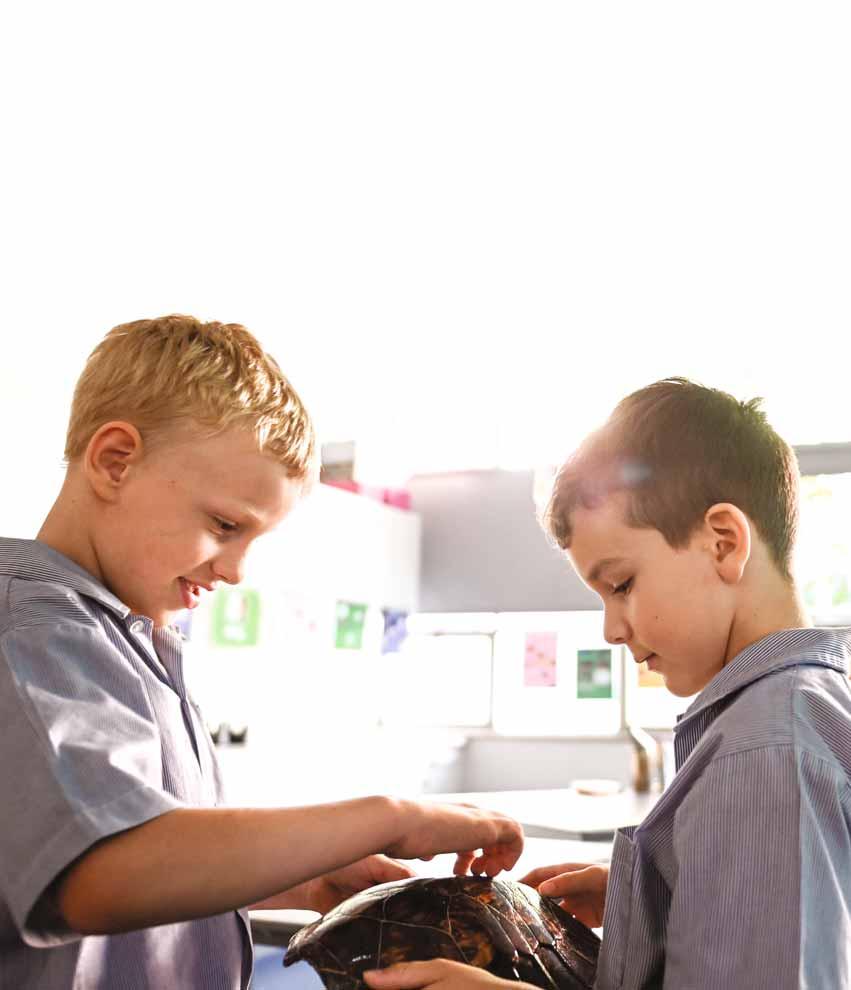
To establish and nurture the Pulteney Experience from 2022-2026 the following strategic priorities will be actioned.
Both the art and science of teaching have evolved markedly in past decades. Deliberate, conscious and selective pedagogical practice is central to effective teaching and learning as teachers adopt roles akin to coaches to work with students through their learning.

The ability to gather data on student learning allows for the tailored development of pathways and opportunities that more precisely target the interest, needs and ambitions of each and every student. Data is an important aspect of understand the effect of teaching, the needs of students and how a school can continue to nurture the development of its students. Increasingly, wellbeing data provides a critical insight into a student’s health and readiness to learn.
Pulteney Grammar School is a destination school: people leave their neighbourhood to join this community. In doing so, families are choosing to be part of a city-based school that has access to the Adelaide CBD at its doorstep. As a resident of the CBD, Pulteney must be a contributing and active member of its local community: a voice for issues, a presence in decision making, and part of the fabric of the city’s gently hum.
To invest in the development of professional practice
4
To use data to inform and design student learning activities and to aid insight into student wellbeing
5
6
Philanthropy derives from the Greek and translates as for ‘the love of humanity’. It serves as a unifying aspect of culture that draws people together through sharing in the opportunities that their contribution can provide so that others
community a position of strength derived from its altruism. For a school, it ensures that a wealth of opportunities for students is available to provide them with the best education possible.
Collaboration provides opportunity for Pulteney to enrich its educational opportunities for students, its experience for parents and its development of staff by drawing on the knowledge and skills of specialists.

Pulteney Grammar School counts itself amongst the oldest educational institutions in Australia and from this heritage comes the commitment to be a voice in the broader educational discourse locally, nationally and internationally. Pulteney’s tradition of innovation and its commitment to a ‘useful education’ underpin its opportunity to serve as a voice in contemporary education.
with South Australia, Australia and the World
To nurture philanthropy and a culture of giving
To enrich the School through partnership





The rhythm of a school day is set by the arrangement of people and programs. Existing
and effective time and place arrangements release students and teachers alike to prioritise what matters most: opportunities to think, learn, and act.
Schools are people places. Every day, around 1200 people come together with the combined purpose of helping each other to be better: better in their knowledge, better in their skills, better in their actions, better in their spirit. Our relationships unite us and help to
The physicality of school serves as a home for all that come to school each and every day. This home has to provide a sense of warmth, a welcoming environment that allows each member of the school community to feel connected, safe and able to be the best version of themselves. As the needs of learning evolve, so must the school site with ensuring that it continues to provide the best possible facilities for our staff, students and parents.
To ensure the Pulteney site can facilitate the Pulteney Experience

• Map student experiences across the school so that they are mutually reinforcing, congruent and scoped and sequenced
• Integrate the School’s wellbeing program from Reception to Year 12
• Draw on the School’s values to develop a framework for how Pulteney nurtures character R-12
• Create a sport program that provides meaning and purpose for all students including quality coaching, competition and comradeship
• Authentically recognise student achievement across the School
• Develop and lead an explicit and detailed local school improvement agenda
• Establish and embed a deliberate and co-ordinated service learning framework
• Review and harmonise the school uniform
• Unite R-6 as one cohesive Junior School
• Resource, strengthen and develop the outdoor education program
To design and curate the Pulteney Experience
• Establish a whole school plan for teaching and learning
• Establish micro-credentialing for complex skills
• Establish a common and instructed complex skill set across the school
the School
• Consider the role that homework plays to support learning and design a schoolwide approach
• Develop and embed a model of learner agency development that
• Embed a learning management system that will provide the opportunity for establishing asynchronous learning capabilities
• Create an integrated and rich information technology architecture across the school
• Sequence the learning journey through the age and stages of school
• Establish entrepreneurial opportunities for students to afford real-world learning beyond the classroom
• Honour and nurture a diverse and inclusive community
Explore learning opportunities that provide agency for student learners and offer authentic experiences

• Develop a professional growth framework
• Create a teaching and learning framework for the School inclusive of the principles, practices, and philosophy that underpin pedagogy
• Develop tailored professional learning, career development and further study programs for all employees
• Establish an employee wellbeing model
• Implement feedback loops across the School
• Create a cohesive workplace environment across the campus
• Position the school as an employer of choice to encourage staff growth and retention
• Explore the sophisticated use of data design a data-driven approach to learning through the school
• Establish tertiary and third-party partnerships to assist with data analysis
• Establish programs and partnerships with city-based organisations with shared values
• Optimise our community networks to create broader opportunities for career experiences and professional connections
• Integrate the city explicitly into our R-10 learning program
To use data to inform and design student learning activities and to aid insight into student wellbeing Facilitate authentic integration to the city as a broader learning environment
• Create structures, strategy and operations to engage with the community and foster philanthropy
• Partner with The Pulteney Foundation for the growth of philanthropy through the School including bequests, giving and masterplan appeals
• Thank and recognise our Old Scholars and staff who have made Pulteney what it is through the launch of the Legends of Pulteney
• Celebrate the 175th anniversary of the School
• Nurture the role of the Parents and Friends, Boat Club, and Friends of Performing Arts support groups in the school community
• Renew the School’s Reconciliation Action Plan
• Target opportunities for Pulteney to join state, national and international educational discourse
• Establish Pulteney as a centre for educational research
To nurture philanthropy and a culture of giving
To share Pulteney with South Australia, Australia and the World
To enrich the School through partnership
asynchronous learning
• Hone internal room and event booking system
• Develop a job ticketing system for the property department
• Implement a community platform that improves the digital experience for all members of our community
• To draw together services of the school such as philanthropy, marketing, communications and enrolments through the shared lens of Advancement
• Develop improved communication channels between teachers, students and families
• Establish a cycle for capturing, analysing and using community feedback
• Establish the next ten year business model focussed on maintaining affordability
• Implement a site renewal plan
• Create a whole-of-site catering approach towards fostering healthy eating and integrate this into the educational program
• Develop on-site dining opportunities to host functions for alumni and the current community
• Establish a new campus master plan
• Develop an integrated purchasing and invoicing system
• Establish a capital funding plan to support the master plan
• Implement the school landscape plan
• Create a school signage masterplan
• Create a campus sustainability plan with the goal of net zero emissions by 2030
To broaden opportunities throughout the School day
To ensure the Pulteney site can facilitate the Pulteney Experience

Anderson, M., and Jefferson, M. (2021), Transforming Education: Reimagining Learning, Pedagogy and Curriculum. BLM ACADEMIC UK
Anderson, Michael and Jefferson, Miranda. (2017) Transforming Schools: Creativity, Critical
Bloomsbury Publishing
Australian Institute for Teaching and School Leadership (AITSL). (2018), Australian Teacher Performance and Development Framework. From: https://www.aitsl.edu.au/docs/default-source/ national-policy-framework/australian-teacherperformance-and-development-framework. pdf?sfvrsn=4a7fff3c_10
Australian Institute for Teaching and School Leadership (AITSL). (2020). Creating a high performing school. From: https://docs.acara.edu. au/resources/Creating_a_high_performing_ school.pdf
Barker, B., & Harris, D. (2020), Parent and Family Engagement: An Implementation Guide for School Communities. Canberra: ARACY
Battelle for Kids, Partnerships for 21st Century Learning. From: https://www.battelleforkids.org/ networks/p21
Beresford, T. (2017), Human-Scale at Scale From: https://www.innovationunit.org/wpcontent/uploads/Human-scale-at-Scale_report_ FINAL-2-compressed.pdf
Bialik, M., and Fadel, C. (2018), Knowledge for the Learn? From: https://curriculumredesign.org/ wp-content/uploads/CCR_Knowledge_FINAL_ January_2018.pdf
Bialik, M., and Fadel, C., and Trilling, B., Nilsson, P., and Groff, J. (2015), Skills for the 21st Century: From: https:// curriculumredesign.org/wp-content/uploads/ CCR-Skills_FINAL_June2015.pdf
Briceño, E. (2014), Mindsets and Student Agency. From: https://aurora-institute.org/cw_post/ mindsets-and-student-agency/
Brown, A., and Cameron, A. (2018), Developing Adaptive Organisations through leadership & culture. From: https://www.adaptivecultures.co/ whitepaper/
Centre for Education Statistics and Evaluation, NSW Government. (2020), From: https://education.nsw.gov.au/about-us/ educational-data/cese/publications/researchreports/what-works-best-2020-update
Claxton, G. (2013), School as an Epistemic Apprenticeship: The case of Building Learning Power. 32nd Vernon-Wall Lecture (pp. 1-27). The British Psychological Society. From: https://
school_as_an_epistemic_apprenticeship.
Collins, J. (2001), Companies Make the Leap and Others Don’t. New York: William Collins.
Department of Education, Tasmania. (2016), Good Teaching Differentiated Classroom Practice Learning for All. From: https:// publicdocumentcentre.education.tas.gov.au/ library/Shared%20Documents/Good-TeachingDifferentiated-Classroom-Practice-Learningfor-All.pdf
Department of Education and Training, Victoria. (2020), High Impact Teaching Strategies. From: https://www.education.vic.gov.au/Documents/ school/teachers/support/high-impact-teachingstrategies.pdf
Donohoo, J. (2016), From: https:// corwin-connect.com/2016/04/collective-
Earl, L., and Timperley, H (2015), Evaluative thinking for successful educational innovation. OECD Education Working Papers, No. 122, OECD Publishing, Paris. From: https://doi. org/10.1787/5jrxtk1jtdwf-en.
Emerson, L., Fear. J., Fox, S., and Sanders, E. (2012), Parental engagement in learning and schooling: Lessons from research. A report by the Australian Research Alliance for Children and Youth (ARACY) for the Family-School and Community Partnerships Bureau: Canberra.
Fadel, C., Trilling, B., and Bialik, M. (2015), FourDimensional Education: The Competencies Learners Need to Succeed. 1st ed., Scotts Valley, CA: CreateSpace Independent Publishing Platform. From: Google Scholar
Goodall, J. (2017), Narrowing the Achievement Gap: Parental Engagement with Children’s Learning Creating a Learning-Centred Schooling System. London: Routledge.
Goss, P., and Hunter, J. (2015), Targeted teaching:
learning. Grattan Institute. From https://grattan. edu.au/wp-content/uploads/2015/07/827Targeted-Teaching.pdf
Hannon, V., Thomas, L., Ward, S., and Beresford, T. (2019), Local Learning Ecosystems: Emerging Models. Research Report. WISE (World Innovation Summit on Education), 30 April 2019. From: www.wise-qatar.org/app/uploads/2019/05/ wise_report-rr.1.2019-web.pdf.Google Scholar
Hannon, V., Gillinson, S., and Shanks, L. (2013), Learning a Living: Radical Innovation in Education 1st ed. London: Bloomsbury Academic. From: Google Scholar
Hattie, J. (2003), Teachers make a difference: Paper presented at the Building Teacher Quality: What does the research tell us ACER Research Conference, October, Melbourne, Australia. Retrieved from: http://research.acer.edu.au/research_ conference_2003/4/
Hattie, J. (2015), From: https://www.pearson.com/content/dam/ hattie/150526_ExpertiseWEB_V1.pdf
Heifetz, R. (2009), Adaptive Leadership. Greelman Research. Vol 2.5. From: https://www.academia. edu/1493720/Adaptive_Leadership_by_Dr_ Heifetz
Hopkins, D. (2013), Exploding the myths of school reform, School Leadership & Management. From: http://www.profdavidhopkins.com/assets/docs/ Exploding%20Myths.pdf
Jensen, B. (2014), Making time for great teaching. Grattan Institute. From: https://grattan.edu.au/ wp-content/uploads/2014/03/808-making-timefor-great-teaching.pdf
Jensen, B. (2011), Better teacher appraisal and
Institute. From: https://grattan.edu.au/report/ better-teacher-appraisal-and-feedbackimproving-performance/
Leadbeater, C. (2017), Student agency: Learning to make a difference. Seminar Series 269. Centre for Strategic Education (CSE). From: https:// Series%20269-December2017-REV-Secure.pdf
Leadbeater, C. (2022), Learning on Purpose: 10 Lessons in Placing Student Agency at the Heart of Schools. Centre for Strategic Education (CSE) Leading Education Series #6
Lucas, B., and Smith, C. (2018),
From: https://cica.org.au/wp-content/uploads/Thecapable-country.pdf
Matters, G. (2006), Using Data to support learning in schools: students, teachers, systems. Australian Education Review. ACER. From: https://research.acer.edu.au/cgi/viewcontent. cgi?article=1004&context=aer
Mapp, K., & Bergman, E. (2021),
engagement. A report from Carnegie Corporation of New York. From: https://media.carnegie.org/
Perkins, D., and Blythe, T. (1994), Putting Understanding Up Front, Educational Leadership, v51 n5 p4-7. From: https://www.ascd.org/el/ articles/putting-understanding-up-front
Ritchhart, R. (2015), Creating Cultures of Thinking: Our Schools. Jossey-Bass
From: https://www. fya.org.au/resource/new-work-order-research/ Timperley, H. (2010), Using Evidence in the Classroom for Professional Learning. Paper presented to the Ontario Research Symposium. From: https://cdn.auckland.ac.nz/assets/ education/about/schools/tchldv/docs/Using%20 Evidence%20in%20the%20Classroom%20for%20 Professional%20Learning.pdf
Wiggins, G., and McTighe, J. (2012), Understanding
Organisation for Economic Co-operation and Development (OECD) Back to the Future of Education: Four OECD Scenarios for Schooling. From: OECD Future of Education and Skills 2030 https:// www.oecd.org/education/2030-project/
OECD (2020), Back to the Future of Education: Four OECD Scenarios for Schooling, Educational Research and Innovation, OECD Publishing, Paris. From: https://doi.org/10.1787/178ef527-en.
OECD (2019), Conceptual Learning Framework: Student Agency for 2030. From: https://www.oecd. org/education/2030-project/teaching-and-learning/ learning/student-agency/Student_Agency_ for_2030_concept_note.pdf
UbD_WhitePaper0312.pdf
Winthrop, R., Barton, A., Ershadi, M., and Ziegler, L. (2021),
engagement. Center for Universal Education at Brookings. From: https://www.brookings.edu/ wp-content/uploads/2021/10/Family_School_ Engagement_Playbook_FINAL.pdf
Zhao, Y. (2018), Reach for Greatness. Thousand Oaks, CA: Corwin.
Zhao, Y. (2012), Creative and Entrepreneurial Students. Thousand Oaks, CA: Corwin.
